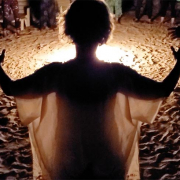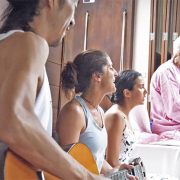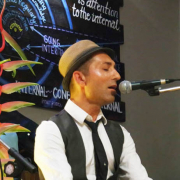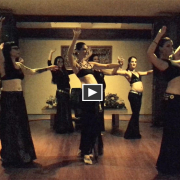 https://samahitaretreat.com/wp-content/uploads/2019/11/Beach-Fire-with-Daphne-Tse-and-Matthew-Cohen.jpg
491
1000
Daniel Stringer
http://samahitaretreat.com/wp-content/uploads/2024/01/samahita-logo-v2.svg
Daniel Stringer2019-11-26 00:00:002024-02-15 09:32:52Beach Fire with Daphne Tse and Matthew Cohen
https://samahitaretreat.com/wp-content/uploads/2019/11/Beach-Fire-with-Daphne-Tse-and-Matthew-Cohen.jpg
491
1000
Daniel Stringer
http://samahitaretreat.com/wp-content/uploads/2024/01/samahita-logo-v2.svg
Daniel Stringer2019-11-26 00:00:002024-02-15 09:32:52Beach Fire with Daphne Tse and Matthew CohenDo you Swing?
Do you swing? Now the condition of your mind will automatically draw you to some meaning of that question. But no (for the majority) I’m not going there, but rather in to the mind and experience of a child, us as children while living grown-up lives. Swing on a swing. Do you ever? Or when was the last time?
If not, what stops you? A lack of grown-up swing stations? No access to park playgrounds for those over 18? Or just identifying as being mature, grown-up, and boring? Ooops, sorry on the last one. Or is it self-consciousness?
Do it.
Go out and find a park.
There’s one closer than you think.
If you’re there because you’re the parent, then enter the realm of young ones. Rule number one in this endeavor, the swing saddle needs to be bigger than the toddler size. And you’ll be surprised that almost every playground you end up in has swings for grown-up size butts (that’s you, and me:)
First thing to note: you will laugh. So be careful. Spontaneous free-flowing laughter is great for your soul, your heart, your brain, your total biology, your relationship at home later, but may make non-swinging walking-by grown-ups feel uneasy (but really they’re just jealous coz you’re so free).
Second thing: it’s quite a workout. It’s a delicious inhale punctuated by rigolant-exhales (a bit of Francais to say laughing while you exhale, or exhaling while you laugh, go find out which is which).
Third thing: blow your cares away. What matters in this world at that moment? And who cares what the people say? You are light, love, happy, carefree. Spread that out there from your regal swinging throne.
Fourth thing: if you have gloves handy, put them on. Those chains are fierce to hold.
Fifth thing: there’s a few other rules to know about. Don’t scare the kids, but when you laugh they’ll naturally want to join in, infected by such delight. Though other items in the playground may seem tempting after a good swing session, step away. Those things on big springs aren’t meant for you. But you can get on the climbing frame, monkey bars, and, yes, wait for it, the slides.
Sixth thing: you control the swing. Legs forward and back. Arms pull and push. Wow what a core! You can go light because you feel that is age-appropriate or you can see if you get to a 180-degree arc (bring your bicycle helmet).
Go alone. Go with friends. Spot someone and join in. But don’t be a party-pooper. Enjoy.
Seventh thing: what a way to share and help. Give someone a push and you might just change their life.
As a young lad in NYC many decades ago I would walk through central park from one early morning teaching session to another with a detour by the swings. And it’s something I keep up still Now I have moved to Yale-land, USA, I have found a playground near me, with two grown-up size swings. And other grown-ups walk by aware someone larger than a ween (Irish for young one) is on that swing but restrain themselves from staring. All the more reason to smile as the swing takes you higher.
What a wonderfully practical and realistic way to put spontaneity, fun, joy, and freedom into your life. Don’t hold back.
Though all the practices of the ancient teachings are incredible I’m pretty sure the swing was invented after them, otherwise we’d find it as a ninth limb, the eleventh commandment, or another Buddhist precept, etc.
But maybe it is in those teachings, under be natural, light, happy, endeavor to enjoy life by being yourself. It is not ridiculous to be older than teens and swing on a swing. Rather the opposite. Give yourself that.
Though to be diligent in self-discipline and forms of practice is important and tremendously valuable, without a light heart, ways to be free, to live self-reflection through lightness in action, these practices lose their edge, do not deliver, because you have left something in the way. An idea of how to behave, or a self-consciousness that inhibits.
So swing, laugh, be happy.
Next, we’ll have to install some swings by the beach at Samahita to keep this going. YogaSwingCoreCycle
Hope to see you soon. Sharing, spreading, and feeling the love.
More from the Samahita Blog
Paul Dallaghan’s expertise with breathwork, body and meditative practices comes from three sources: over 25 years of daily dedicated practice and teaching these techniques; immersion in the original culture through one-on-one direct training in practice and study of ancient texts; doctoral scientific research at a leading US university (Emory) on yoga and breath in terms of stress, health and aging. Paul occupies a unique space to impart genuine teaching and science on these practices, acknowledged by his teacher and lineage (Kuvalayananda) in India as a Teacher-of-teachers and a Master of Breath, identified to carry the tradition (Pranayama). This places him as the only master-level yoga and breath practitioner currently immersed in scientific academic research on breathwork, stress and health. His sincere and ongoing role is to teach, write and research to help put out experienced and authentic information on these areas in a world full of confusion and conflicting messages both off and online.
For more on his background see his bio.




